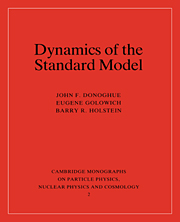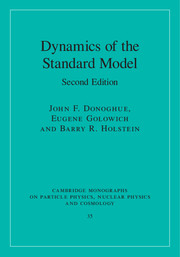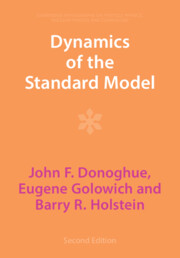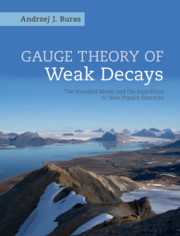Dynamics of the Standard Model
This book gives a detailed account of the Standard Model of particle physics, focussing on the techniques by which the model can produce information about real observed phenomena. It opens with a pedagogic account of the theory of the Standard Model. Introductions to the essential calculational techniques are included. The major part of the text is concerned with the use of the Standard Model in the calculation of physical properties of particles. Rigorous and reliable methods (radiative corrections and nonperturbative techniques based on symmetries and anomalies) are emphasized, but other useful models (such as the quark and Skyrme models) are also described. The strong and electroweak interactions are not treated as independent threads but rather are woven together into a unified phenomenological fabric. Many exercises and diagrams are included.
- Standard Model is the outstanding achievement of past thirty years in particle physics
- Gives detailed account of Standard Model
- Pedagogic and comprehensive
Reviews & endorsements
'The history is thrilling and illustrates wonderfully the deep interdependence of experiment and theory …' Science
'excellent book for advanced student or researcher' Physikalische Blatter
'There is a wealth of material here. If you want to find out what is the strong CP problem or the OZI rule, or what understanding there is at present of heavy quark life-times of the Delta I = 1/2 rule, you will find the answers here in a relatively accessible form, and much else besides.' Contemporary Physics
Product details
No date availablePaperback
9780521476522
560 pages
220 × 203 × 31 mm
0.95kg
60 b/w illus. 30 tables 50 exercises
Table of Contents
- Preface
- Inputs to the standard model
- Interactions of the standard model
- Symmetries and anomalies
- Introduction to effective Lagrangians
- Leptons
- Very low energy QCD - Pions and photons
- Introducing kaons and etas
- Kaons and the ∆S=1 interaction
- Kaon mixing and CP violation
- The large N expansion
- Phenomenological models
- Baryon properties
- Hadron spectroscopy
- Weak interactions of heavy quarks
- The Higgs boson
- The electroweak gauge bosons
- Appendices
- References
- Index.





